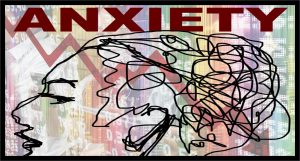“Until he extends his circle of compassion to include all living things, man will not himself find peace.” —Albert Schweitzer
During Circular Dialogue training participants learn and implement a specific set of interpersonal guidelines referred to as the Rules of the Dialogue Circle. Depending on the Dialogue Circle situation, the Rules of the Dialogue Circle may be presented in an abbreviated form, explored in great depth and detail, and in various levels of depth in between. However, there are some basic standards of conduct that are always included.
The Rules of the Dialogue Circle embody the three following very important principles: 1) The opinions of others are exceptionally important to me; 2) My opinion is exceptionally important to others; 3) There are no contradictions between our opinions (although they may seem contradictory at first glance, they will turn out to be complementary).
Rules of the Dialogue Circle
1. Equality and importance
No one is ‘more’ or ‘less’ important – all participants are equal and very important. In discussion, all relate to others as equals and do not overpower another with knowledge, position, etc. There must be no discrimination based on gender, age, race or any other criteria.
2. One single topic
Together participants discuss a particular, preliminary selected, common topic. Participants are very attentive to the facilitator and never veer off course.
3. Everyone speaks
By requiring each participant to speak, an environment is achieved in which everyone is a contributor to the mutual solution. By each presenting his own point of view and connecting it with those of others, each participant is enriched. Not only does each begin to understand others better, but himself also. If participants remain silent, they fail to add a necessary component of the collective unity.
4. Everyone listens to, and hears, others
Participants speak one at a time without interrupting. Participants listen carefully to each speaker, trying to feel, understand them and to truly ‘merge’ with each opinion. This is of paramount importance for Dialogue Circle participants.
5. No arguments, criticism, or judgment
Participants in a Dialogue Circle never argue. They fully accept someone else’s point of view no matter how absurd it may seem, and only add their own to it. There are no right or wrong opinions. All opinions have their place and everything goes in the collective “depository.” Through this process, a new perspective is gained on the issue being discussed by viewing it through a collective lens.
Participants refrain from speaking about the specific views of other participants; instead, each focuses only on answering the questions of the facilitator. Participants must be especially careful to not express any opinions about the contribution of another, either positively or negatively. It is crucial to observe this rule since criticism can hurt and alienate participants who have revealed their ideas in the Dialogue Circle, while praise singles out participants and creates imbalance in the circle.
6. No dialogue and/or questioning between participants
No dialogues or cross-conversations are allowed within the Dialogue Circle. And participants do not ask each other questions. Such practices are damaging to the connection in Circular Dialogue because they immediately break the circle into smaller groups. Participants refrain from the use of phrases like, “I agree with …”, “I like what was said by …”, or “I support …,” because in singling out someone, the principle of equality is broken and division is created within the Dialogue Circle. Each participant addresses only the central discussion of the Dialogue Circle.
7. We rise above antagonism and irritation
Participants try to overcome disagreement with others by looking at the issue through the eyes of all participants collectively. When there are signs of rejection, misunderstanding, or disagreement between those sitting in the circle, participants aim to overcome them through a common effort, rising above divisions to discover an overarching unity. Participants learn to appreciate such experiences of discord or disagreement as opportunities for mutual advancement and growth.
8. We aspire to be sincere, avoiding slogans and clichés
Participants only express individual, personal thoughts and feelings, without referring to influential people or quoting sources. The Dialogue Circle functions best when participants are honest, sincere, and speak from the heart.
9. We decide collectively
Participants in the Dialogue Circle aim to arrive at one collective view, obtained through a common lens of mutual understanding and unity. Participants typically come to this point at the end of the discussion, when all personal opinions converge into a collective opinion. Observing this rule, makes it possible to access the power of collective intelligence. When participants are truly connected, they operate from a higher plane of consciousness, and begin to act as elements of an integral whole that is larger than either the individual perspective or the sum of individual perspectives. Participants in the Dialogue Circle achieve a sensation of closeness with the surrounding environment in which the myriad components are perceived as aligned and integrated, where all opposing parts come to a point of perfect balance.
10. We aim for this noble goal–to create a common space of collaboration, love, care and warmth
During a Dialogue Circle, the primary focus of participants, whether speaking, listening to others, trying to be ‘in tune’ with others, is aimed at achieving unity. The priority is not to achieve any particular result or to discuss solutions; the priority is to achieve connection. Superior results and solutions arise naturally once when participants form that common, integral field.






